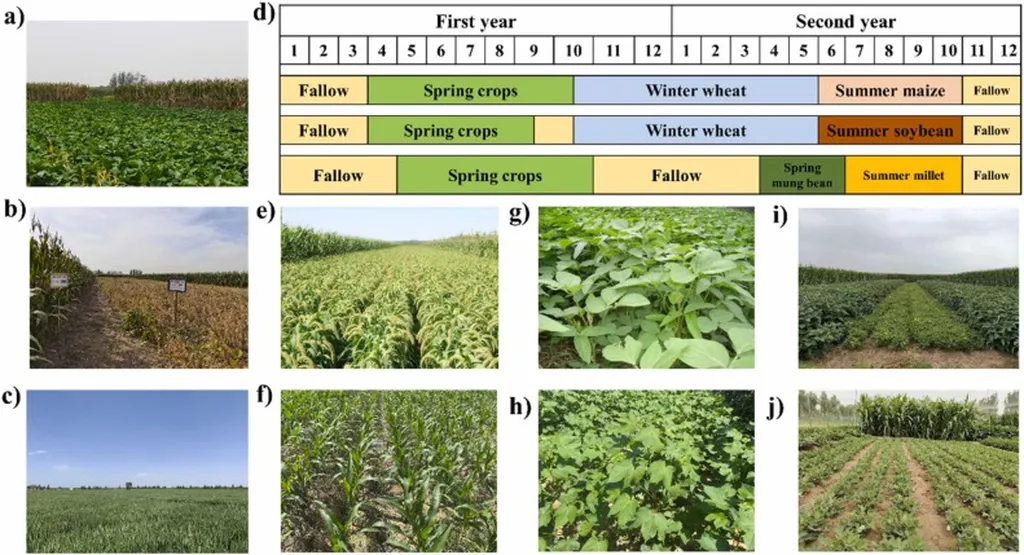In the heart of China’s North China Plain, a region where water scarcity and agricultural productivity often clash, a groundbreaking study led by Lei Yang from the State Key Laboratory of Maize Bio-breeding at China Agricultural University and the Crop Research Institute of Anhui Academy of Agricultural Sciences is reshaping our understanding of sustainable farming practices. The research, published in the *Journal of Crop Science and Biotechnology*, explores how diversified crop rotation systems can significantly boost grain yield and water use efficiency (WUE) of winter wheat, even under limited irrigation.
The study, conducted over six years, compared the traditional wheat-maize cropping system (WM) with four diversified rotations: spring maize, millet, peanut, and soybean preceding the wheat-maize sequence. The results were striking. “We found that diversified rotations increased wheat yield by an average of 16.7% and WUE by 9.6% compared to the traditional system,” Yang explained. “In drier cycles, these increases were even more pronounced, with yields and WUE rising by up to 81.5% and 86.8%, respectively.”
The key to this success lies in the spatiotemporal dynamics of soil moisture. Diversified rotations enhanced the synchronization of soil water supply with the crop’s water demand, particularly during critical growth stages like regreening, jointing, and anthesis. This synchronization led to increased spike numbers and aboveground biomass, ultimately driving higher yields and more efficient water use.
The implications for the agricultural sector are profound. As water scarcity becomes an increasingly pressing issue, farmers and agronomists are seeking sustainable strategies to maintain productivity. This research suggests that diversified crop rotations could be a game-changer, offering a practical and effective way to enhance wheat production and conserve water in arid regions.
Moreover, the findings have broader implications for the energy sector. Agriculture is a significant consumer of water resources, and improving water use efficiency in farming can free up water for other uses, including energy production. By adopting diversified rotation systems, farmers can contribute to a more sustainable water management strategy, benefiting both the agricultural and energy sectors.
Looking ahead, this research could pave the way for further innovations in crop rotation strategies. As Yang noted, “Our study provides a strong foundation for exploring other diversified rotations and their impacts on crop productivity and water use efficiency.” Future research could delve into the economic viability of these systems, their long-term ecological impacts, and their potential to be scaled up across different regions and climates.
In conclusion, the study by Lei Yang and his team offers a promising solution to the challenges of water scarcity and agricultural productivity. By embracing diversified crop rotations, farmers can not only boost their yields but also contribute to a more sustainable and resilient agricultural system. As the world grapples with the realities of climate change and resource depletion, such innovations will be crucial in shaping the future of farming.

